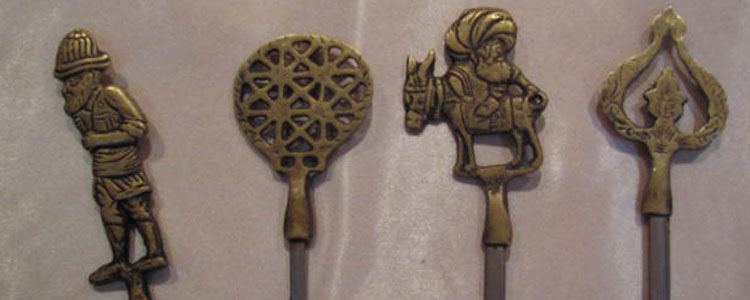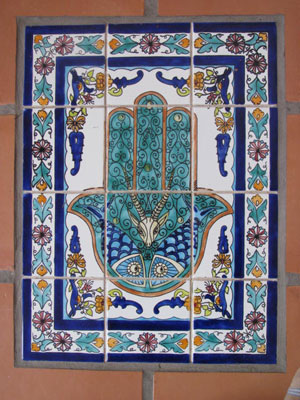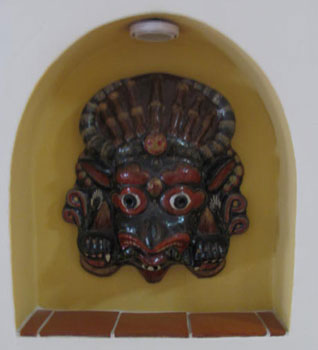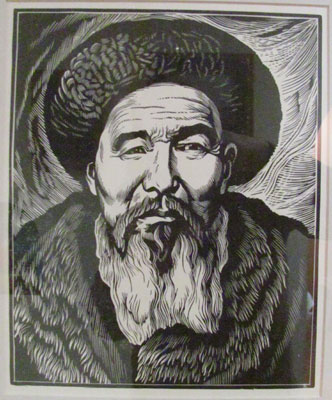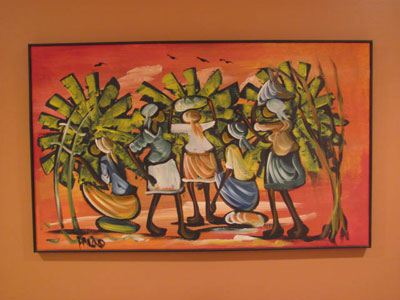Tips for making the most of shopping overseas
by Steven Cole; Lowell, MI
I am a man who absolutely loves to shop, something that makes my wife’s female friends extremely jealous. I even love to grocery shop. But most of all, I love to shop for things for our home on our trips abroad.
Do your research
In a half century of travel, I’ve learned many tricks that make my shopping more rewarding.
First, I plan my shopping before I leave home by researching what’s worth buying at my intended destination. In many countries, certain goods are specialties of a particular village or region, and this can influence my itinerary within a country.
I’ve found Mexico and Central Asia to have the biggest selections of unusual things, while sub-Saharan Africa and most island nations have the least to choose from.
Because I shop a lot at home, I’m familiar with what’s available in America, but this wasn’t always the case. Many years ago I found a cigar mold in an antique shop in Sydney. With youthful enthusiasm I bought the mold and lugged this large, heavy object to the other side of the world, only to find that cigar molds are pretty common at American flea markets.
Another time, I bought a copper pot in the fascinating Grand Bazaar in Istanbul. Since the pot was too big for any suitcase, I hauled it on board as a carry-on for the flight home. A few weeks later I found scores of identical pots at a big-box crafts store. So, if shopping is big on your “must do” list, it pays to check out stores at home, especially import shops, before you leave on any trip.
Sizing things up
When traveling, I carry a small spiral notebook to use as a trip diary. On the inside front cover I list the dimensions of rooms in our house and the sizes of significant spaces, such as that above a sofa or mantle. I even daub a bit of paint from each room in the notebook and tape in snips of fabric or threads of carpet I might be trying to match.
Since foreign sizes are so different from our own, I list the waist sizes, arm lengths, heights, etc., of our grandchildren so if we see a cute item of clothing, we can be sure of buying the right size. I carry a small retractable tape measure for measuring things anywhere at any time.
I also carry a wide variety of supplies for securing and protecting my purchases for the trip home. I prefer Scotch® brown “shipping tape” and Scotch® clear “packaging tape” over duct tape. However, duct tape rolled lengthwise can make a very sturdy rope.
We buy paintings and prints by local artists, and I’ve discovered that large plastic or cardboard tubes of the type used by architects to carry plans provide an excellent way to bring them home safely. You’ll find the tubes at stores that sell architects’ or artists’ supplies.
I also carry clear slider-seal kitchen bags in several sizes as well as bubble wrap, several feet of heavy string, a length of light clothesline and rubber bands (more about these things in a moment).
Shop outside the box
My first stop at any destination is a grocery store because we like to buy snacks and drinks to have in our room. While there, I check out unusual foods that are unavailable at home, including spices, bottled sauces, unfamiliar jams, etc. I’ll usually buy something unfamiliar and try it. If I like it, I can return to the store for some to take home.
Several shopping experiences have taught me to browse stores most travelers wouldn’t consider. For example, in Istanbul we admired kebab skewers with decorative handles that sold for as much as three or four dollars each at tourist shops. When I happened to wander into a hardware store not far from the main tourist attractions, I found the very same skewers for 25¢ apiece.
In Chile, a hardware store yielded a clever hand-cranked fan for starting a fire in a barbecue grill or fireplace, and in a Norwegian hardware store I found a sleek, chrome toilet paper holder.
My wife, Sharon, is a knitter, weaver and sewer, so she searches any place that might sell fabric or yarn. At a neighborhood street fair in Amsterdam she found quality drapery fabric for a dollar a meter. This experience taught us to always check out places you wouldn’t think would have anything you’d want to buy.
At bookshops, I always ask if they have any English-language titles. Often I find unusual things such as cookbooks, containing native dishes or a local writer’s take on a developing nation’s turbulent politics. I also buy children’s books in any language, as their simplicity makes them easily understood and they can aid little ones in picking up foreign phrases.
In major cities I also check out toy stores, home furnishings stores and shops selling music CDs for unusual items not found at home.
Protecting your finds
In 2003 our focus on shopping intensified and we learned even more about how to find unique items and get them home safely. Many people approaching retirement downsize to a smaller home, but in that year we did the opposite, designing a larger home than we’d ever lived in before, which gave us room to display the treasures from our trips.
That same year we planned a trip to Tunisia, and in doing my shopping research I discovered that the town of Nabeul is known for its decorative ceramic tiles. But how to bring them home? Bubble wrap! I carried a roll and used it to wrap several dozen one-of-a-kind tiles, which I carefully transported in my carry-on bag.
Today, a Hand of Fatima tile from Nabeul graces the floor in our entryway.
Fragile items can also be protected in other ways. Cardboard in other countries is seldom as heavy duty as ours, so I use various tapes to reinforce cardboard boxes or even to fashion a new box using cardboard (usually doubled) from boxes I find while traveling. (I carry a sharp penknife in my checked baggage for this purpose.) You can ask at shops or even at the kitchen of a large hotel for any discarded containers they might have.
In Mexico, a shop owner offered to build a small wooden crate to protect some glassware I intended to carry on the plane home. This taught me to always ask shop owners what services they might provide to protect and wrap items for travel.
One time, my bags sat on a runway in Tokyo during a pouring rain. I might have expected a downpour in the tropics, but I hadn’t in Japan. My soft-sided bag leaked at every seam and damaged some decorative papier-mâché boxes packed inside. This taught me to always put purchases in clear plastic bags. The bags also help lessen damage if security searches your luggage.
Having items shipped home is much more reliable today than it was 30 or 40 years ago, but I still think, despite some risks, you’ll save money and hassles by bringing your purchases home with you. However, if you simply must have a five-foot Chinese porcelain vase, you’re probably much better off buying it from an importer in New York or San Francisco than a shop in Hong Kong.
Displaying your treasures
Building a house with the idea in mind of displaying treasures from trips taught us some things as well. We have a long, wide central hall that could double as an art gallery, so we designed lighted niches in the walls to hold small art objects.
We also designed our house with raised ceilings, so large works of art could more easily be displayed, and we installed skylights to help light the art throughout the day. Raised ceilings are relatively easy to incorporate into many remodeling projects, and tubular skylights are relatively inexpensive and easy to add to any existing house.
Our final lesson
Finally, I learned the most important shopping lesson of all when I worked on a foreign aid project in Kyrgyzstan.
In tourist shops in Bishkek, the capital, they sold small pieces of fabric cut from large, hand-embroidered cloth wall hangings that, until a couple of generations ago, graced the tents of nomads. These pieces can cost as much as several hundred dollars.
One day during my trip, I was walking in a remote village when a woman called out to my interpreter that she had something she wanted to sell me. To my amazement, the woman was offering a magnificent antique hanging, fully intact. The piece, an inverted “U” measuring 11 feet wide with side panels five feet long, was totally covered with finely stitched embroidery.
I had no idea what I would ever do with such a large piece, but I knew purchasing a similar piece at any gallery in the West would cost thousands of dollars. It wasn’t the value of the piece that I was thinking of, however. It was simply the coolest “souvenir” I’d ever seen.
The woman was selling it for a mere $70. Today it frames a sleeping alcove in our library.
The lesson learned — if you see something that is extremely interesting, a real bargain or both, even if you have no idea in the world what you’ll ever do with it, buy it! You will never have the same opportunity again.

